Last Updated on February 5, 2022 by Heather Hart, ACSM EP, CSCS
Have you ever wondered what heart rate zone training entails, and why so many runners choose to use this method? Has a coach recommended you train based on calculated running heart rate zones, and you aren’t sure what to expect…or what that even means?
You aren’t alone. The science behind heart rate training, and all of these different zone numbers, can feel confusing and overwhelming, especially when you are new to this style of training.
Believe me, I’ve been there.
Many, many, years ago, I was a newer runner with very big goals. I decided to hire a running coach to help me achieve said goals. The very first thing coach had me do was a lactate threshold test (which I conveniently got to do in the form of a fancy VO2 max test in an exercise science lab, perks of being a university student at the time) and then, I was assigned running “zones” based on heart rate instead of pace.
And so many of those workouts were much slower and easier than I was used to. The truth was, at that point in my running career, I was seemingly running every workout as fast and hard as I could, but never really making much progress.
Nevertheless, I simply could not understand why my coach wanted me to run a large majority of my training runs at such a significantly easier effort than I was used to. If I wanted to get faster, shouldn’t I consistently be training faster?
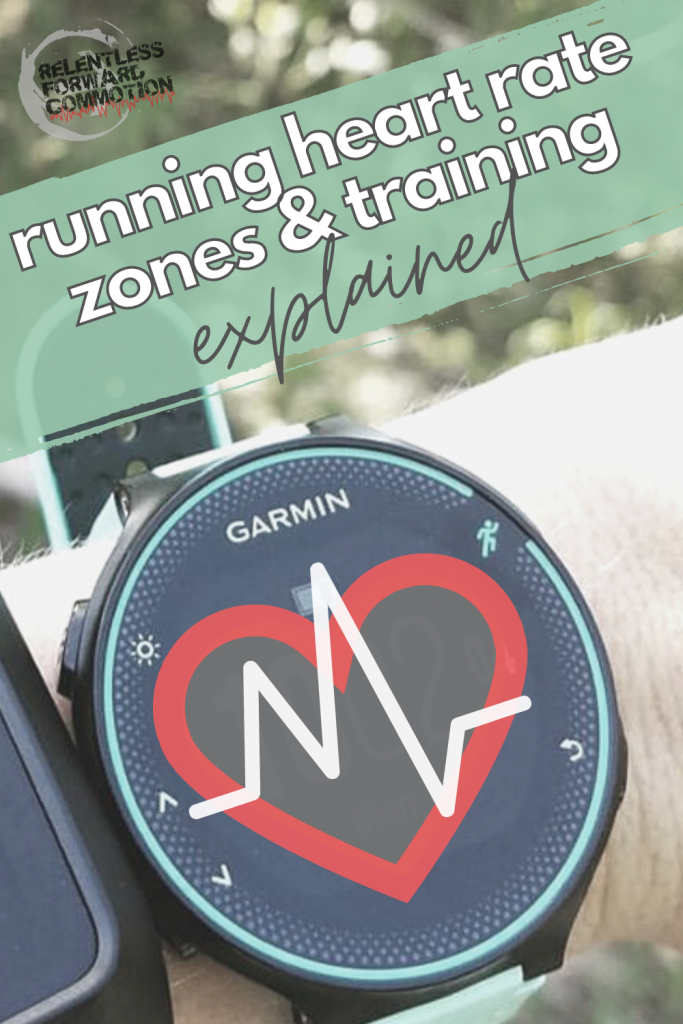
Over the years I would understand exactly why you do sometimes need to run slower, in order to become a faster runner. And further, I’d learn why even 100 mile ultramarathon runners can benefit from fast, hard, Zone 5 intervals.
And my goal is to help you understand too.
In this post, I’m going to break down the science behind heart rate training into easier-to-understand bites, so you can finally understand the science behind heart rate training, and decide if running by heart rate zones is the right training method for you.
Understanding the Basics of Heart Rate & Energy System
Before we can understand how or why heart rate training works, we need to quickly review some basics.
Think of blood as the vehicle within your body that delivers oxygen and nutrients to all of your body’s cells so that they can function, and also removes waste products away from the cells to rid them from your body.
Your heart, the powerhouse of your cardiovascular system, is the muscle that is responsible for making sure blood keeps moving throughout your body. Heart rate refers to how fast (or slow) your heart is beating at any given time. Measured in number of beats per minute (bpm), heart rate is a great indicator of how hard your body is working.

Increased physical efforts (like running) require increased oxygen and nutrients, as well as an increased demand for getting rid of waste and by products.
Therefore, the harder you run, the faster your heart needs to beat, to quickly deliver blood to your muscles and other tissues, in order to to keep up with the body’s demand for oxygen.
But let’s take this just a little deeper, stick with me, I promise to keep this one as simple as possible:
3 Energy Systems In The Body
Your body needs energy in order to perform pretty much every single movement or bodily function that it can possibly do.. Our bodies use oxygen to help turn the food we eat – like gels and trail side pizza – into adenosine triphosphate, or ATP, the form of fuel your cells can actually use. This process is called cellular respiration, and our body has three energy system pathways which it utilizes.
Phosphagen System
When you start to run, no matter what the intensity, the phosphagen system is the first one to go to work, metabolizing a molecule called phosphocreatine to produce ATP.
The phosphagen system doesn’t require oxygen, and works fast, but because your cells don’t store a lot of phosphocreatine, it maxes out after only about 10 seconds of exertion. So from here, depending on how hard you are running, your body will start mainly utilizing one of the following two energy systems:.

Oxidative Pathway
If you are running at an easier effort, your body will mainly utilize the oxidative system.
Note: It’s important to remember that our bodies do not immediately switch from one system to the next, and at any given point, we are likely utilizing multiple energy systems. That’s why I say mainly using.
The oxidative system is an aerobic respiration pathway, meaning it requires oxygen to work. This pathway creates large amounts of energy for your body to use, utilizing all three macronutrients (fats, carbohydrates, and protein) as a fuel source. Comparatively, it’s a relatively slow process.
Glycolytic Pathway
Now, say you’ve hit a massive hill, or you’ve decided to take off on a sprint to the finish line. The energy your body demands to perform at this intensity requires more oxygen than you are able to take in and consume per breath.
Now your body is switching into anaerobic pathway for creating energy . This system produces energy quickly, but in limited quantities.
In the glycolytic pathway, your body quickly reaches a point where it is no longer able to clear lactate (sometimes still referred to as lactic acid), a byproduct of this pathway, from the blood as fast as it is produced (very simply put, this is known as the “lactate threshold” , which is often used interchangeably with anaerobic threshold, though the definitions are slightly different.). Our bodies can only sustain this effort for a short amount of time before we are forced to slow down.
The good news? We can train our bodies to increase this threshold, so we can run faster and harder before hitting that threshold. And utilizing the heart rate zone training method is a great way to do it.
How Does Heart Rate Training Work?
Now, various physical adaptations to training occur at different percentages of maximum heart rate, based on what energy system our body is mainly utilizing.
Knowing this, we can use a target heart rate zone as a guideline to ensure we are working hard enough (or, easy enough, as the case may be) to specifically target the adaptations and running performance goals we are seeking with any given workout.
What are some of those adaptations? Things like:
- promoting recovery to help stimulate muscle growth
- building a runner’s endurance base
- increasing a runner’s lactate threshold
- improving speed, strength, form, and turnover
- increasing a runner’s maximum aerobic capacity
…and more.
Again, it’s important to remember that we are never in ONE energy system at a time. And further, it’s important to understand that the aforementioned thresholds, and thus, adaptations, occur at slightly different rates for individual runners.
Heart rate training is not perfect (more on that later), but it is a useful method for targeting specific intensities.
What Are The Running Heart Rate Zones?
Going back to our quick anatomy and physiology lesson above, the various heart rate zones are indicators of how hard our body is working, as well as what energy system they are mainly utilizing.
There are a number of different training zone models based on both various research, and exactly what method is used to determine the different zones in the first place.
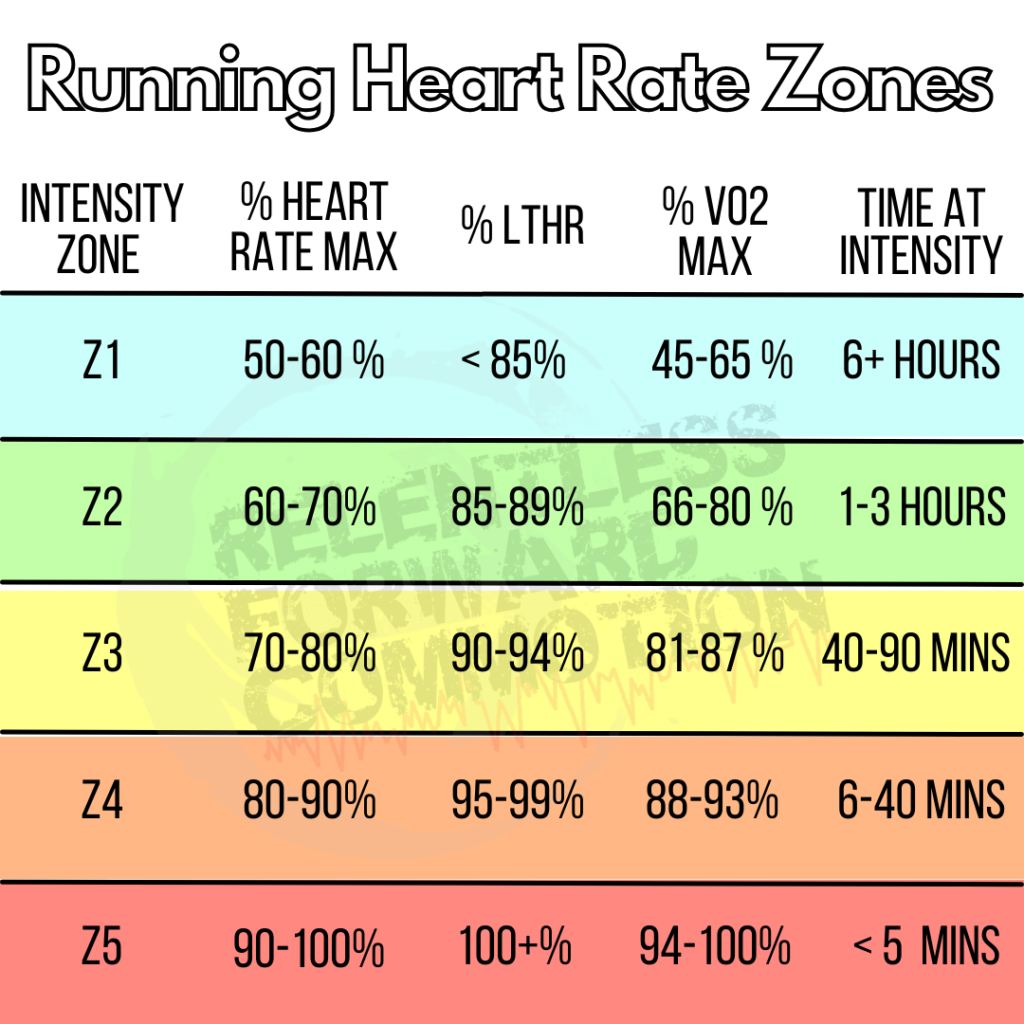
Zone 1
- Very easy, light effort. Almost feels “too easy”.
- Occurs at 50–60% of maximum heart rate
- < 85% of lactate threshold
- Mainly utilizes the oxidative, or “aerobic” energy pathway.
- Can be sustained for quite a long time (think: significantly longer distances, like ultrarunning)..
- Allows increased blood flow to muscles to aid in recovery, but does not put significant stress on the body.
- Example of a Zone 1 workout would be a recovery run or any workout programmed as “easy runs”.
Benefits of Zone 1 Training:
Zone 1 training is fantastic for helping promote recovery after a tough workout. The movement of a zone 1 workout helps increase blood flow to your muscles, which can help promote and stimulate the recovery process, as well as increase the removal of waste products from your body.
Zone 1 runs are what many coaches refer to as “easy days”, they put less stress on the body than the other intensities. But, you are still increasing your heart rate above resting levels, which can still provide cardiovascular benefit, as well as contribute to building your overall endurance. Therefore Zone 1 workouts are great for those who need to get in a training session (I’m looking at you, run streakers) but want to put as little stress on the body as possible.
How Often Should You Run in Zone 1?
The frequency of running in Zone 1 will absolutely depend on the individual, their experience, their current fitness level, and their training goals.
Zone 2
- Easy effort at a comfortable pace. Can carry on conversation without feeling winded, but noticeably working harder than Zone 1.
- Occurs at 60-70% of maximum heart rate
- 85-89% of lactate threshold
- Mainly utilizes the oxidative, or “aerobic” energy pathway.
- Can be sustained for longer periods of time, typically upwards of three hours.
- Zone 2 helps improve endurance by increasing:
- Slow twitch muscle fiber size
- Mitochondrial density
- Capillary density
- Improving fat oxidization (using stored fat for fuel)
- Examples of Zone 2 running workout would be long runs or a base building runs (favorites of endurance athletes everywhere!)
Benefits of Zone 2 Training:
Running in Zone 2 helps build your overall endurance and running “base” in a number of ways.
First, Zone 2 heart rate efforts stimulate, strengthen, and grow Type 1 muscle fibers. These muscle fibers can withstand high levels of fatigue, and therefore are the main type of muscle fibers utilized in longer distance running.
Stimulating type 1 muscle fibers also stimulates mitochondrial growth and function which will improve the ability to utilize fat. Fat is a slow burning energy source, perfect for long distance running. Plus, by teaching your body to use fat as a fuel, you preserve glycogen (carbohydrate) stores, which means you are less likely to “bonk”.

Lastly, type 1 muscle fibers are responsible for clearing lactate clearance, which means by strengthening your Type 1 muscle fibers, you increase your lactate clearance capacity.
What does that mean in simpler terms? You’ll be able to run faster, longer, before hitting that anaerobic stopping point.
How Often Should I Run in Zone 2?
Regardless of your running goal, running experience, or training methods you are utilizing, almost all experts agree that a large majority of your training should be run in a Zone 2 / aerobic effort. Even super fast elite athletes spend much of their training time in Zone 2.
Depending on where you are in your training cycle, and what your end goal is, expect anywhere from 2-4 workouts a week in Zone 2.
Zone 3
- Moderate effort. Can still talk, but in shorter sentences or few words. Notably increased breathing rate.
- Occurs at 70-80% of maximum heart rate
- 90-94% of lactate threshold
- Can be sustained for upwards of 90 minutes
- Helps improve efficiency of blood circulation
- Begins training body to process lactate
- Examples of Zone 3 running workouts include steady state runs
Benefits of Zone 3 Training
Running in Zone 3 is definitely more challenging than the easier Zone 1 and Zone 2 efforts, but is easier and more sustainable than Zone 4 and 5. Zone three is where many new runners inadvertently end up, as they haven’t nailed down the skill of proper pacing.
A lot of people may refer to Zone 3 as “junk mileage” , but this is far from the truth.
Running in Zone 3 helps you build your aerobic endurance, because you are pushing faster than your Z1 & Z2 effort, BUT still remaining below your lactate threshold. This teaches your body to run faster while still in this aerobic zone.
Further, many people end up racing half marathon and full marathon distances in Zone 3, so occasionally training in those teaches your body – and mind – what to expect.

So Why Don’t We Do All of Our Runs in Zone 3?
If Zone 3 is still aerobic, but makes you a stronger runner, why not stay in Zone 3 as much as possible? Great question.
Zone 3, while still technically aerobic, is physically harder on your body than Zone 1 & 2, and elicits a greater stress response. Therefore, Zone 3 training is going to demand more recovery time than Zones 1 & 2. If you were to do all of your sub lactate threshold running in Zone 3, you’d more than likely find it really difficult to recover from the cumulative stress, which would ultimately hinder, and not help, your running.
How Often Should I Run in Zone 3?
Again, it depends on your running goals, race distance, and where you may be in your training cycle. If your race goal requires more of a Zone 3 effort (think: marathon pace versus 100 miler) than it would make sense to include occasional Zone 3 running workouts as a means of training for race specificity.
Zone 4
- Hard effort. Noticeable increase in breathing rate and heart rate. Not able to really talk. (Vigorous exercise)
- Occurs at 80-90% of maximum heart rate
- 95-99% of lactate threshold (typically where most athletes enter their anaerobic zone)
- Can be sustained for anywhere from 6 to 40 minutes (not an absolute number, but a general range) and in some athletes, upwards of an hour.
- Training in zone 4 allows your body to begin to withstand higher levels of lactate build up in the bloodstream, and thus, increase your lactate threshold.
- Mentally, you learn how to push through muscular fatigue that comes with running harder and faster.
- Examples of workouts in Zone 4 include tempo pace running efforts.
Benefits of Zone 4 Training
Zone 4 workouts will help you increase your lactate threshold, which means you can run faster and/or harder, for longer, before your body enters anaerobic respiration, and begins to slow down (or totally crash and burn, as the case may be).
The adaptations your body makes to tempo run efforts includes increasing the size and density of mitochondria (where aerobic respiration takes place) in your muscles, which in turn improves your ability to not only process lactate in the blood, but utilize lactate as fuel. You also:
- Increase plasma volume, helping you better regulate body temperature
- Increase mitochondrial enzyme activity, helping you produce ATP (energy) faster
- Improve speed. Zone 4 effort is much faster than the everyday, base building, “easy” pace many runners enjoy. As with any exercise the more we practice it, the better we become at that task (in this case, running faster)
- While not a physiological adaptation, Zone 4 workouts Help improve mental toughness. These workouts are hard, andl last quite a bit longer than shorter interval sprints. You really have to dig deep to be able to hold a tempo pace for the prescribed longer durations.

How Often Should I Run in Zone 4?
Zone 4 workouts can be beneficial for runners of all distances, with all types of goals. Even ultramarathon runners can benefit from Zone 4 workouts, as they will ultimately help an athlete increase the speed of their ‘all day” running pace.
The frequency of Zone 4 running workouts will depend on the runner’s goal and where they are in a training cycle. For example, it would make more sense for an ultrarunner to perform Zone 4 workouts early in their race training cycle, to help build fitness, but not to perform many of them later in the training cycle, as this is not a race specific effort.
On the other hand, someone looking to set a PR in a 10K would perform more Zone 4 running workouts closer to their race, at the end of a training cycle, as Zone 4 is very much race specific for the 10K distance.
Zone 5
- Maximum effort
- Occurs at 90-100% of maximal heart rate
- 100% and beyond lactate threshold
- Zone 5 efforts can only be sustained from a few seconds, upwards to maybe 5 minutes, depending on the workout.
- Helps increase maximum aerobic capacity (VO2max), increases fast twitch muscle fiber size and density, improves speed and strength.
- Examples of Zone 5 running workouts would be 100 meter repeats, or interval training like 3×3 Vo2 max interval repeats.
Benefits of Zone 5 Training
You may have heard the term “VO2 max” before. Your VO2 max is a measurement of the maximal amount of oxygen your body can utilize during exercise. While much of a runners VO2 max relies on genetics, gender, and age, research shows it can be increased between 5-30%
Zone 5 training can help increase a runner’s VO2 max, which will in turn will help raise the ceiling to be able to improve lactate threshold as well as aerobic paces.
Further, Zone 5 training helps improve:
- Muscular strength through increasing fast twitch muscle fibers and recruitment
- Running speed
- Running form and cadence (turnover)
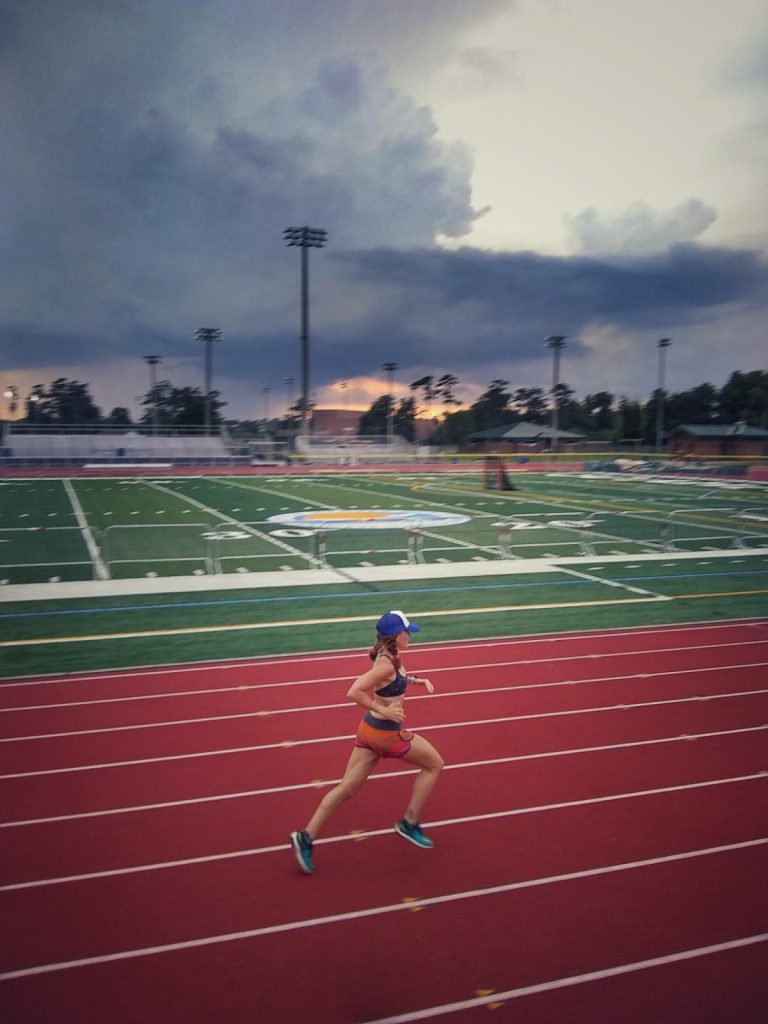
How Often Should I Run in Zone 5?
By this point I sound like a broken record. But again, the amount of time a runner spends focusing on Zone 4 running workouts will depend on the runner’s goal and where they are in a training cycle.
It’s important to note that efforts in the higher heart rate zones, like Z4 & Z5,create a large amount of physical stress on the body, and thus, will require greater recovery demands.
For this reason, newer and less fit runners may not be able to complete as many Zone 5 workouts per week or training mesocycle compared to more experienced and stronger runners.
The Benefits of Heart Rate Training for Runners:
In addition to allowing a runner to target the specific training adaptations they are looking to achieve with each workout, other benefits of heart rate training for runners include:
Heart Rate Zone Training May Help Prevent Burnout and Injury
Many runners tend to push higher intensity training, and not even realize it, more frequently than they should. This can lead to physical and mental burnout, and even worse, potentially injury.
Giving our body the opportunity to recover when necessary is invaluable, and using heart rate zones can hold us accountable to truly keeping it “easy”.
Heart Rate Zones May Help a Runner Differentiate Efforts
On the other hand, I’ve worked with a number of runners who were often too nervous to push out of their “comfort zone”, and never pushed as hard as they should on harder effort days, such as tempo runs or speed work. Again, heart rate zones can help us ensure we are training at the correct intensity.
How Do I Determine my Running Heart Rate Zones?
In order to most accurately determine your heart rate zones, you need to know either your:
- Maximum Heart Rate
- Lactate threshold, or
- VO2 max.
How do you determine these numbers? With one of the following methods:
Lab Testing
Maximum heart rate, lactate threshold, and VO2 max can be most accurately measured during a maximal capacity (most accurate) or submaximal (more accurate) testing in a controlled, professional, laboratory setting.
However, while this may be the most accurate and best way, this is obviously not the most accessible way for most runners to determine their running heart rate zones.
Submaximal Field Tests
There are a number of submaximal field tests you can do to calculate your VO2 max if you do not have access to maximal testing options at a lab. It’s important to remember that the VO2 max numbers you calculate at the end of these tests are simply estimates.
An example of a frequently used submaximal test to determine heart rate training zones is the 30 minute lactate threshold test.
The results of your test will allow you to calculate your training zones based on equations designed through research, and found to be relatively accurate.
Pro tip: if you run with a Smart endurance GPS watch like a COROS or a Garmin, the watch may have a built in submaximal testing protocol workout. You perform the workout following the watch’s cues, and the training software will calculate your zones for you. Check your watches user manual for more details.
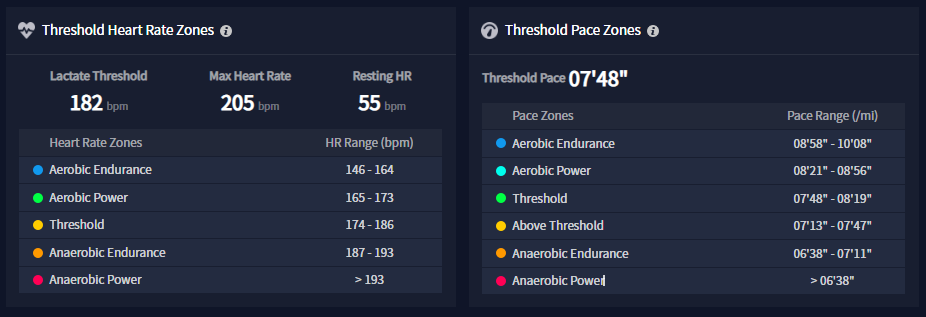
How to Calculate Maximum Heart Rate
There are a number of different calculations available for runners to determine their estimated max heart rate, without any testing involved.
Research shows that these are not the most accurate way to determine your heart rate, as they take no individual data into consideration (like your current cardiovascular fitness), other than your age (3)
But, maximum heart rate prediction calculations are certainly the most simple and easily accessible way to get an idea of what your HRmax may be.
- Fox et al.
- HRmax = 220 – age
- The most commonly known heart rate max prediction equation was published in 1971by Fox et al. In this equation, you subtract your current age from 220 in order to determine your HRmax. This formula is known to be quite variable, with an error range estimated at 7–12 beats per minute (bpm).
- Astrand
- HRmax = 216.6 – (0.84 x age)
- This equation is best used for men and women between the ages of 4-34 years old.
- Tankaka et al.
- HRmax = 208 – (0.7 x age)
- This equation is best used for healthy men and women.
- Gellish et al.
- HRmax = 207 – (0.7 x age)
- This equation is best used for adult men and women with a broad range of age and fitness levels
- Gulati et al.
- HR max = 206 – (0.88 x age)
- This equation is best used for healthy, middle aged women, and according to ACSM, is commonly used in stress test protocol

Heart Rate Zones Will Change Over Time
It’s important to remember when calculating your running heart rate zones that these zones will change over time.
Heart Rate Max Changes with Age
As we age, our maximum heart rate and aerobic capacity naturally decreases. This is an inevitable consequence of aging, and simply has to do with the fact that your heart muscle is older, and doesn’t function as well over time.
Training May Change Your Zones
We know that regular physical activity can help improve heart health and lower resting heart rate. But, for the most part, you cannot train to increase your maximum heart rate. Much of achievable HRmax is fixed, and dependent on genetics.
But, as your fitness increases with training, you may be more likely to be able to perform closer to your true HRmax, AND sustain that effort for longer periods of time, which may give a different result during a maximum or submaximal test.
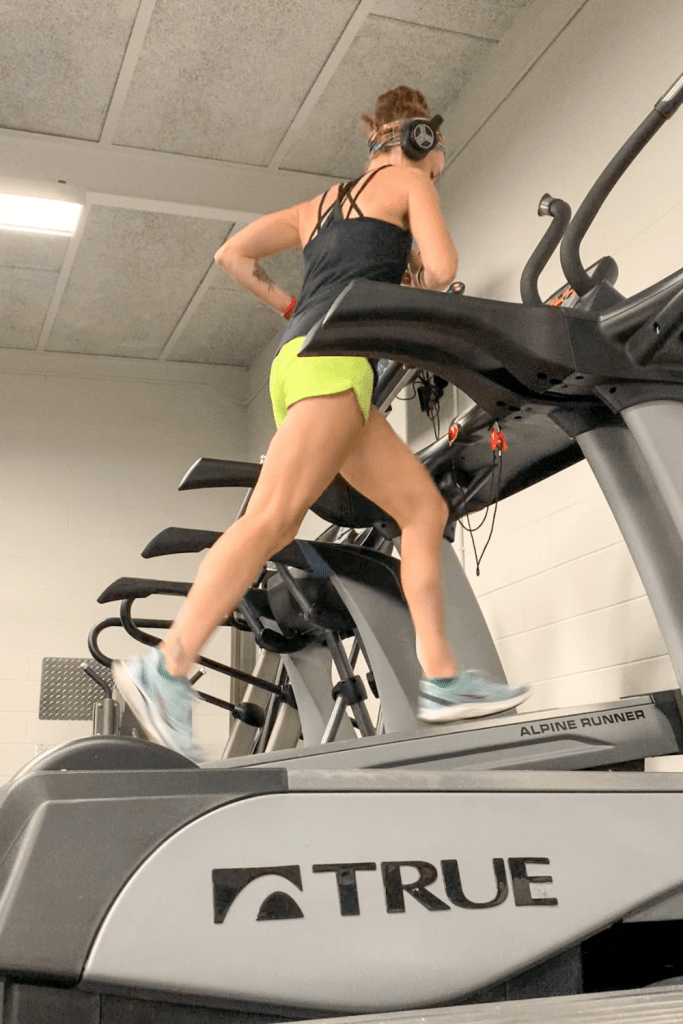
Further, research shows that some untrained individuals may actually lower their HRmax with training. How is that possible?
As we improve our fitness, we also improve the fitness of our heart. As such, stroke volume – the amount of blood pumped out of the left ventricle of the heart during a contraction -increases . This results in an increase in cardiac output – the volume of blood pumped out by the heart per minute.
An increased stroke volume and cardiac output means your heart doesn’t have to work as hard to supply your body with the necessary blood and oxygen, and thus, your maximum achievable heart rate will decrease.
For this reason, you may want to perform field tests before the start of each new race training cycle to see if your heart rate ranges shift.
Heart Rate Max Changes with Age
As we age, our maximum heart rate and aerobic capacity naturally decreases. This is an inevitable consequence of aging, and simply has to do with the fact that your heart muscle is older, and doesn’t function as well over time.
Is Heart Rate Training Accurate?
Is heart rate training perfect? No, not at all. This methodology does not come without its flaws. Let’s dive in:
Zone Predictions May be Off
As we already discussed above, heart rate zone calculations aren’t very accurate.
Even field and lab tests may have flaws. Submaximal testing protocols still only give a prediction/estimation of heart rate max.
If an athlete fails to adhere to the protocol, is too nervous to truly push as hard as they can, or has faulty heart rate tracking equipment, these numbers are going to be flawed.
Therefore, sticking strictly to the calculated zones may not yield the results we are looking for
Heart Rate Monitor Accuracy
Wrist based heart rate monitors are not very accurate. Though wrist heart rate monitors are now incredibly common in GPS watches and other fitness trackers they are not as accurate as chest strap monitors. Researchers seem to agree that while optical wrist based heart rate monitors are “OK”, they are simply not as accurate as using a chest strap. (1, 2, and an entire list of sources)
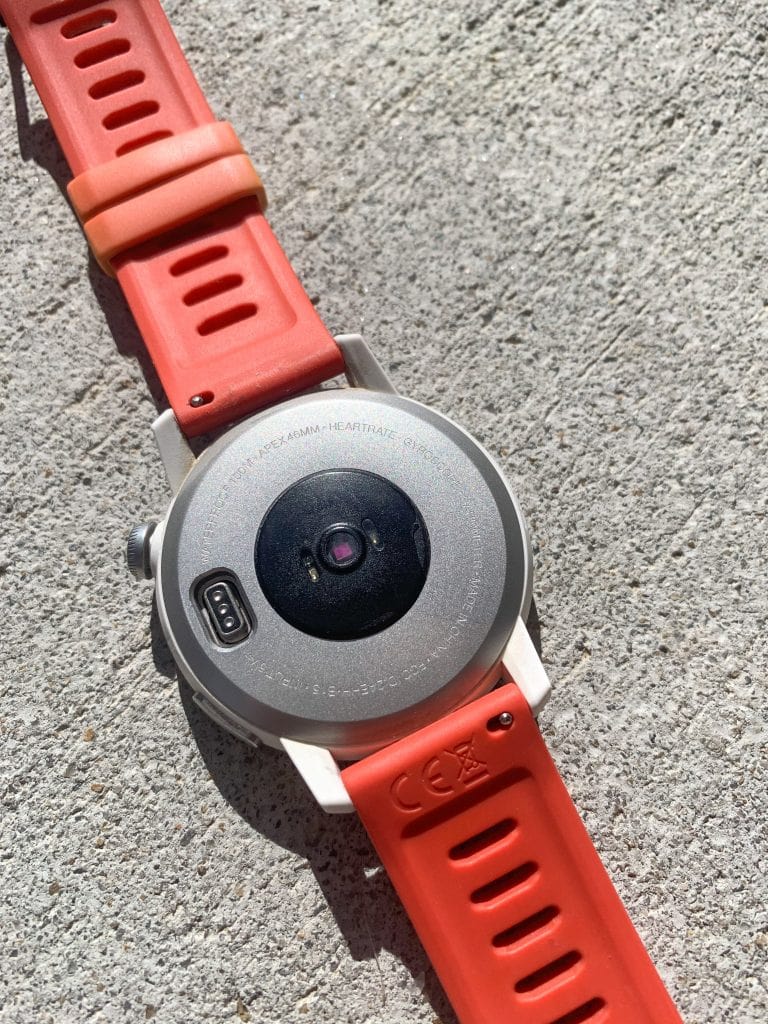
Why are they less accurate? Wrist and arm based heart rate monitors use optical sensor technology. They utilize a light to measure blood flow, and therefore can be affected by things like: skin color, excessive hair, tattoos, freckles or other skin pigmentation, and placement of the monitor (too tight, too loose, not in the right spot, etc.)
If a runner’s heart rate monitor is not reading correctly, they may decrease or increase effort, based on the inaccurate heart rate data , and not achieve the desired intensity they were looking for in the first place
Other Influences on Heart Rate
Heart rate can be affected by SO MANY THINGS. Influences like:
- hydration (or dehydration) status
- caffeine consumption
- medications or pharmaceuticals taken
- environmental weather (is it hot? cold?)
- cardiac drift
- emotions/ stress,
- thyroid issues, illness/infection
WHO MIGHT NOT BE A CANDIDATE FOR HEART RATE ZONE TRAINING
- Runners who have a variable heart rate due to things like a pre-existing cardiac issue, or other medical conditions.
- Athletes who may be on a medication that directly affects heart rate.
- Runners who cannot get a reliable reading from heart rate monitors, due to monitor placement or fit.
- Those who simply cannot run in prescribed zone, and must walk 100% of the time (this defeats the purpose of run-training)
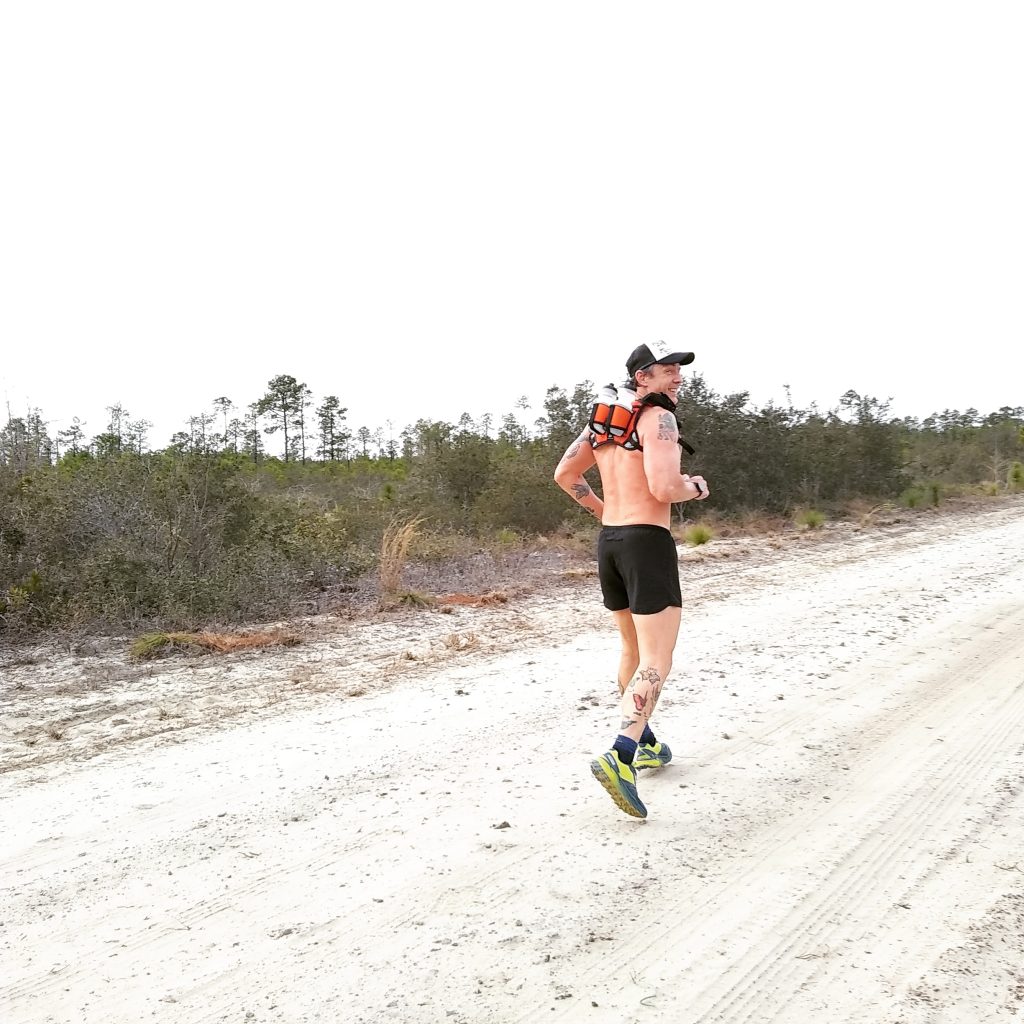
These are just a few examples of who may not be a good candidate for heart rate training. In these cases, I prefer to go back to setting our zones based on prescribed pace and self perceived effort, rather than heart rate.
7. TIPS FOR RUNNERS NEW TO HEART RATE TRAINING
New to heart rate training? Keep these tips in mind as you get started:
1. Make Sure You’ve Set Your Training Zones Correctly
The zones that your watch automatically spits out without being attached to any sort of field test are likely not accurate.
Before diving into heart rate zone training, make sure you’ve performed an actual test – either in a lab or in the field – to get more personalized data and zones to use for your training.
2. Remember that There is “Method to the Training Madness”
If you are newer to running, or new to the idea of running at various heart rate efforts or intensity (vs. running the same speed all of the time), heart rate training may feel frustrating at first.
But remember, the idea behind heart rate zone running is to target specific adaptations and running performance goals. Trust the process!
3. Don’t Stress About Your Pace
If you’ve always run using pace as your guide, it may be frustrating to see slower paces correlate with lower zones. My suggestion? Set your GPS screen to show heart rate ONLY.
Don’t worry about pace, don’t worry about distance. Turn your focus instead to seeing how well you can keep your heart rate in it’s prescribed zone.
4. Remember that Heart Rate is Variable
Prescribed pace is stagnant, but heart rate is variable. Changes in stress level, health (i.e. sickness), hydration status, or even menstrual cycle can affect heart rate. Further, external factors such as temperature, air condition, etc. can affect heart rate.
Therefore, on a day you “aren’t quite feeling yourself” or even really hot, humid days you may notice you are running at a slower pace in your prescribed one. On days where the weather is crisp and cool, you are well rested and hydrated, you may feel like you are effortlessly flying while staying in your zone.
What this means for you is that by staying in your zones you will not be pushing TOO hard on days when your body is clearly telling you that it is already under stress.
5. Use the Zones as a Guideline, Not an Absolute
Keeping the above in mind, use your running pace zones as guidelines, not absolute lines drawn in the sand. If you go one or two beats per minute over your zone, don’t stress over it, or feel you have to immediately stop and walk.
Instead, make a conscious effort to lower your intensity over time.
6. Give Yourself Free Run Days
Assign yourself a workout without your heart rate monitor from time to time, or make sure your coach does. ‘
Scheduling “fun run” or “free run” days into your training plan, where you run by feel and completely ignore your heart rate will help prevent training frustration and burnout. Use these days to remember why you enjoy running in the first place.
7. Trust in Your Training.
I cannot emphasize this enough. In my experience it takes a solid 4-6 weeks of training using the heart rate zone method to begin to notice improvements. At that point, you truly see the value of this type of training, and you’ll be very happy you stuck with it!
Alternatives to Heart Rate Training for Runners
There are absolutely alternatives to heart rate training , both utilized and sometimes preferred by athletes, coaches, and trainers for endurance training. Those include:
- 3 Intensity Zone Model
- Pace training or utilizing pace zones
- The Borg Rate of Perceived Exertion (RPE) scale
While heart rate zone training may be effective for many, it’s not for everyone. If you aren’t a fan of heart rate training, or have limitations that prevent you from successfully heart rate zone training, these may be better training approaches for you.
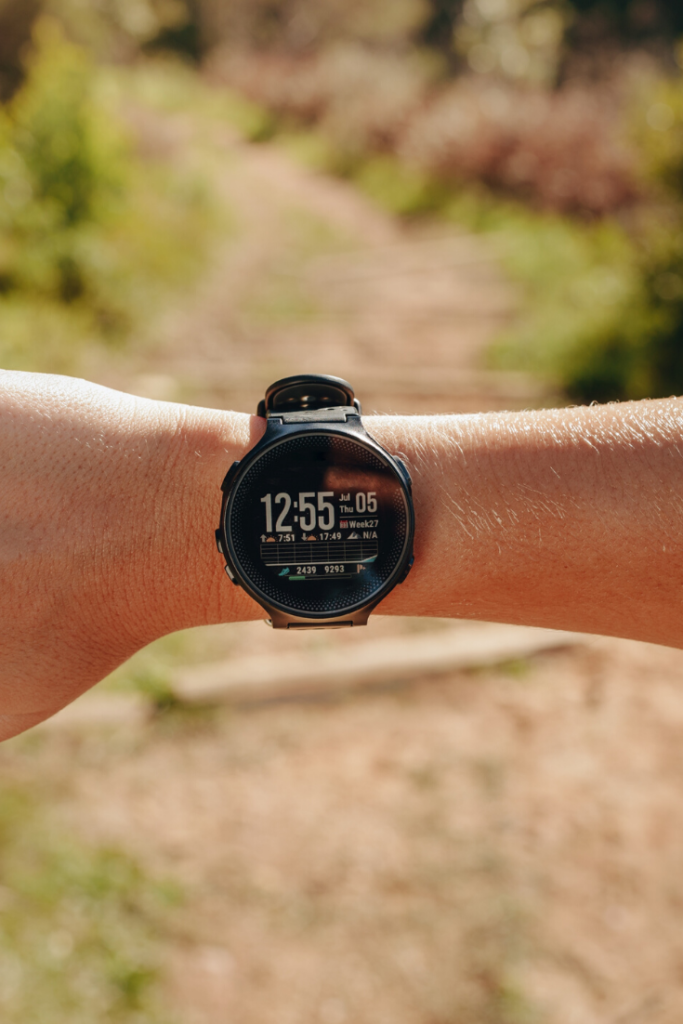
Final Thoughts on Heart Rate Training for Runners:
There are endless arguments against heart rate zone training for runners, and some of them are certainly not without merit. It’s true, heart rate zone training does not work for everyone, for a myriad of reasons.
However, it has been my experience that most beginner to intermediate runners have been training without a lot of “purpose” and specific planning. In these cases, heart rate zone training not only gives a specific outline to training (paired, of course, with a periodized plan written by a coach) but also teaches the runner to learn to recognize effort (i.e. “easy” vs. “moderate” vs. “hard”, etc.) with quantifiable numbers.
And further, to use their heart rate to better recognize outside factors like stress, dehydration, potential illness, etc. rather than just writing it off as a “bad run” and getting frustrated.
My goal, other than helping clients achieve their race specific goal, is to teach athletes to be better runners. And learning to really become in-tune with your body is a HUGE part of becoming a successful runner.
Resources:
- Etiwy, M., Akhrass, Z., Gillinov, L., Alashi, A., Wang, R., Blackburn, G., Gillinov, S. M., Phelan, D., Gillinov, A. M., Houghtaling, P. L., Javadikasgari, H., & Desai, M. Y. (2019). Accuracy of wearable heart rate monitors in cardiac rehabilitation. Cardiovascular diagnosis and therapy, 9(3), 262–271. https://doi.org/10.21037/cdt.2019.04.08
- Gillinov, S., Etiwy, M., Wang, R., Blackburn, G., Phelan, D., Gillinov, A. M., Houghtaling, P., Javadikasgari, H., & Desai, M. Y. (2017). Variable Accuracy of Wearable Heart Rate Monitors during Aerobic Exercise. Medicine and science in sports and exercise, 49(8), 1697–1703. https://doi.org/10.1249/MSS.0000000000001284
- Shookster, D., Lindsey, B., Cortes, N., & Martin, J. R. (2020). Accuracy of Commonly Used Age-Predicted Maximal Heart Rate Equations. International journal of exercise science, 13(7), 1242–1250.
Heather Hart is an ACSM certified Exercise Physiologist, NSCA Certified Strength and Conditioning Specialist (CSCS), UESCA certified Ultrarunning Coach, RRCA certified Running Coach, co-founder of Hart Strength and Endurance Coaching, and creator of this site, Relentless Forward Commotion. She is a mom of two teen boys, and has been running and racing distances of 5K to 100+ miles for over a decade. Heather has been writing and encouraging others to find a love for fitness and movement since 2009.

Jess
I’m glad you posted this! You’re so great with words. I’ve been talking with a few runners about this same thing but, you’ve explained it much better. 🙂 I’m sharing!